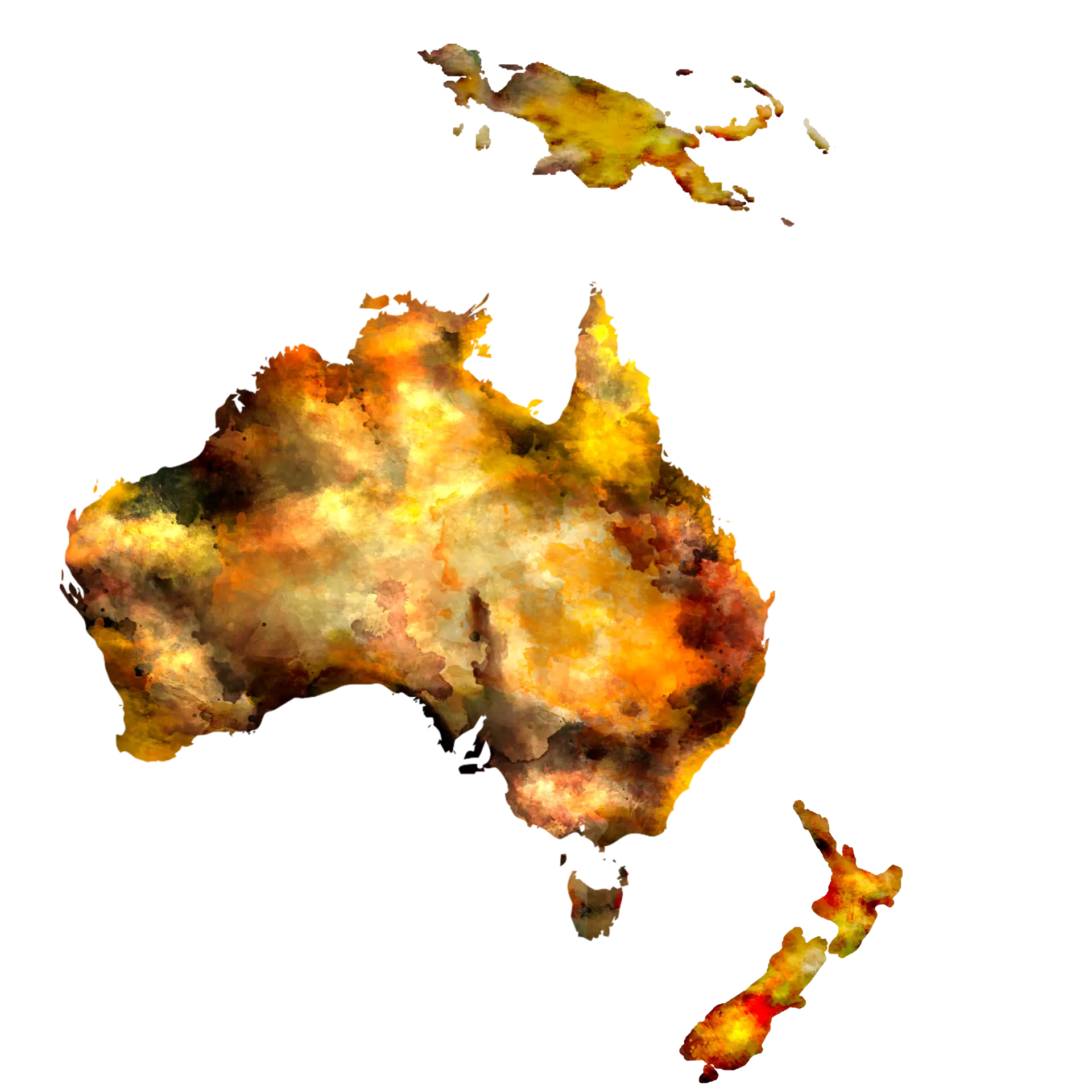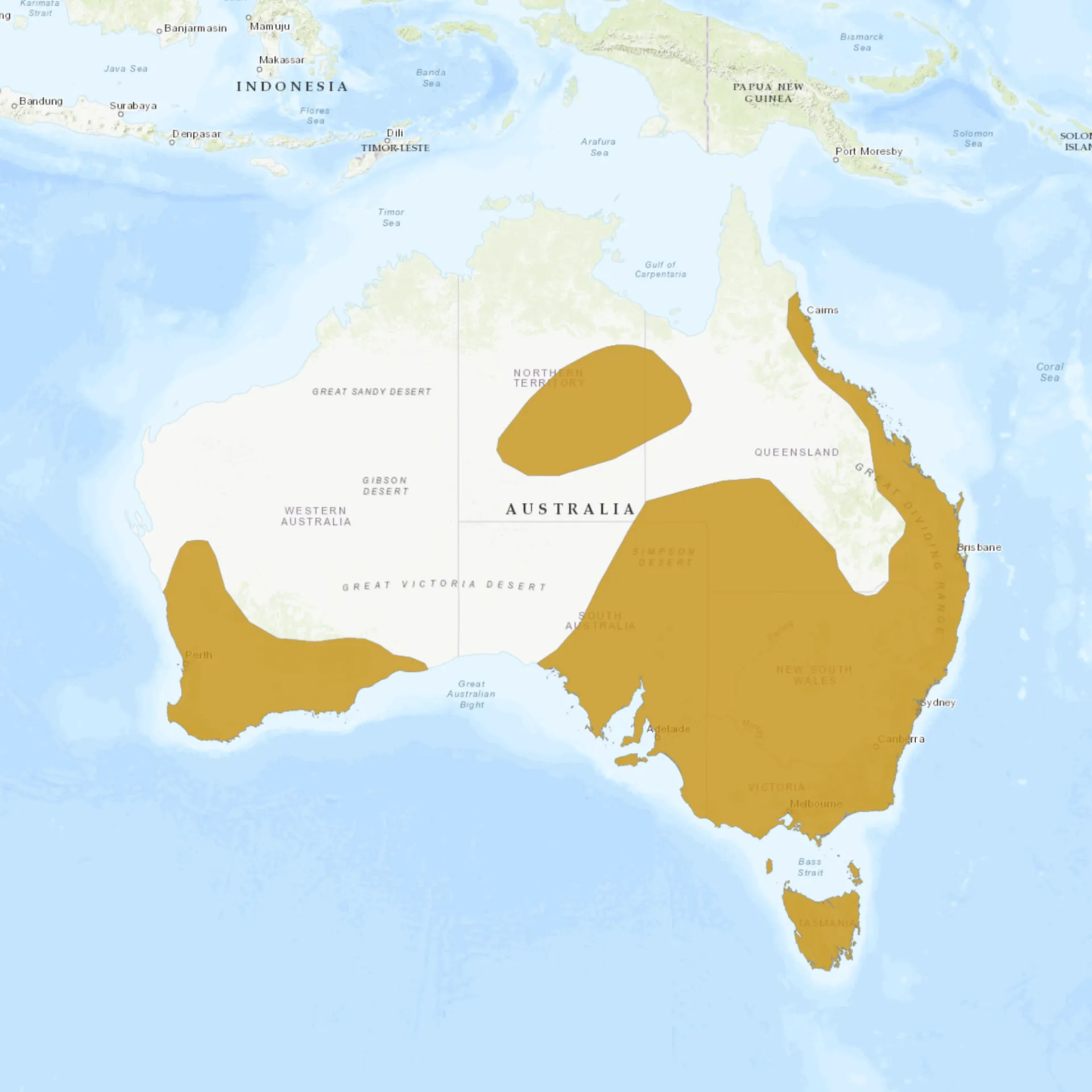Overview
The Chestnut Teal (Anas castanea) is a small dabbling duck native to southern Australia, recognized for its striking plumage and preference for coastal wetlands. Males display a distinctive chestnut-colored body with a green iridescent patch on the wings, while females and juveniles have a mottled brown appearance, blending seamlessly with their marshy habitat. Both sexes exhibit a dark grey bill, with males having a paler, almost white eye ring contrasting their darker heads. These ducks are relatively small, measuring 40 to 48 centimeters long, and have adapted to a wide range of wetland environments, including estuaries, lagoons, and swamps.
Chestnut Teals are known for their resilience and adaptability, thriving in natural and artificial water bodies. They are excellent swimmers and efficient foragers, dabbling at the water’s surface or upending to reach aquatic vegetation and invertebrates. Unlike many waterfowl, Chestnut Teals are less likely to migrate, preferring to remain within their native range throughout the year. Their vocalizations, a soft ‘quack’ in females and a more whistle-like sound in males are commonly heard during the breeding season and play a vital role in pair bonding and territory defense.
Breeding can occur almost year-round, influenced by rainfall and food availability. Chestnut Teals are monogamous, with pairs forming strong bonds. Nests are typically well-hidden among dense vegetation near water, where the female lays 8-12 creamy-white eggs. Incubation duties fall solely to the female, lasting about 25-30 days, while the male guards the surrounding territory. Ducklings are precocial and able to feed themselves shortly after hatching, although they remain under the watchful eye of their mother for several weeks.
Taxonomy
Kingdom
Phylum
Class
Order
Family
Genus
Species
Type
Current distribution:
Chestnut Teals are widely distributed across southern Australia, from Western Australia to Victoria and Tasmania, and up to southern Queensland. They are resident birds, showing little migratory behavior, although they may move locally in response to changing water levels and habitat conditions. Their populations are considered stable, with protected areas and conservation efforts helping to ensure their continued presence in their native range.
Chestnut Teals have shown an ability to maintain or even increase their numbers in areas where their habitats are protected and managed. They are commonly found in natural and artificial wetlands, including suburban and urban parks, which allow people to observe these ducks in the wild.
Physical Description:
Chestnut Teals exhibit sexual dimorphism, with males sporting a rich chestnut brown body contrasted by a dark green head and a distinctive green speculum bordered by black and white on the wings. Females and juveniles are more subdued, with mottled brown plumage that provides excellent camouflage in their wetland habitat. Both sexes have relatively short, dark grey bills and webbed feet suited for their aquatic lifestyle. The males’ bright chestnut plumage and the females’ cryptic coloring are most apparent during the breeding season.
These ducks are compact and robust, with a body adapted for swimming and flying. Their strong and pointed wings enable swift, direct flight, which is often low over the water. During flight, the green speculum is a prominent feature, visible against the dark background of their wings. Chestnut Teals are smaller and less bulky than many other duck species, making them agile in the water and efficient at navigating through dense vegetation.

Lifespan: Wild: ~10 Years || Captivity: ~15 Years

Weight: Male: 1.0–1.5 lbs (0.5–0.7 kg) || Female: 0.9–1.4 lbs (0.4–0.6 kg)

Length: Male: 14–17 in (36–43 cm) || Female: 13–16 in (33–41 cm)

Wingspan: Male & Female: 24–27 in (61–69 cm)

Top Speed: 50 mph (80 km/h) in flight
Characteristic:
Native Habitat:
The Chestnut Teal is predominantly found in southern Australia, inhabiting diverse wetland habitats. They strongly prefer shallow, brackish waters of coastal bays, estuaries, and inlets, as well as freshwater lakes, swamps, and rivers. These environments provide abundant food resources and vegetation for nesting and cover. Despite their coastal preference, Chestnut Teals can also be found in inland water bodies, particularly during increased inland rainfall.
Their adaptability to various water qualities, including highly saline or polluted waters, highlights their resilience as a species. Conservation of their wetland habitats is crucial, as these areas face threats from drainage, pollution, and urban development, which can impact the availability of suitable nesting sites and food resources.
Biogeographical Realms:
Continents:
Countries:
Diet:
Diet & Feeding Habits:
Chestnut Teals are omnivorous, with a diet that includes various aquatic plants, seeds, insects, and small crustaceans. They feed by dabbling at the water’s surface or tipping forward to submerge their upper body, reaching food below the surface without fully diving. These ducks are also known to graze on grasses and herbs near the water’s edge, taking advantage of the seasonal abundance of different food sources.
Their feeding behavior is highly adaptable, allowing them to exploit a range of habitats and food types. Chestnut Teals often feed in small groups, especially during the non-breeding season, when they can be seen foraging alongside other waterfowl species. The efficiency of their feeding strategy supports their high energy needs for flight and thermoregulation in their often cool and windy habitats.
Mating Behavior:
Mating Description:
Chestnut Teals form monogamous pairs, often remaining together for several breeding seasons. Their mating system is characterized by strong pair bonds, with males actively defending their mates and nesting territory from rivals. Courtship displays include vocal calls, head-bobbing, and feather fluffing, strengthening the pair bond and synchronizing mating readiness. Breeding timing is flexible, primarily from June to November, but can extend throughout the year depending on environmental conditions.
The female carefully chooses nesting sites, usually in dense vegetation near or over water, to protect against predators. The nest is a shallow depression lined with down and vegetation. After laying, the female incubates the eggs, relying on the camouflage of her plumage and the secluded nest location for protection. Ducklings are led to water soon after hatching, where they begin to feed under the supervision of their mother.
Reproduction Season:
Birth Type:
Pregnancy Duration:
Female Name:
Male Name:
Baby Name:
Social Structure Description:
Chestnut Teals are generally sociable birds, often found in small flocks outside the breeding season. They show territorial behavior during breeding, with pairs defending their nesting area. Social interactions within flocks include a range of vocalizations and behaviors that maintain group cohesion and communicate information about food sources and threats.
During the breeding season, the strong pair bond between mates is evident, with males actively participating in territory defense and alerting females to potential dangers. This social structure, combining both sociable flocking behavior and monogamous pairing, reflects the adaptability and complex social interactions of Chestnut Teals in their natural environment.
Groups:
Conservation Status:
Population Trend:
Chestnut Teals are abundant and widespread throughout their native range in southern Australia. Their populations are stable thanks to their adaptability to different wetland habitats and the presence of conservation areas that protect their natural environments. They are a common sight in suitable habitats, indicating healthy population levels.
Conservation efforts focusing on wetland preservation and restoration are key to ensuring the continued success of Chestnut Teal populations. These ducks benefit from protected areas that safeguard their breeding and feeding grounds from development and pollution. Ongoing research and monitoring are important for understanding their ecology and addressing potential threats.
Population Threats:
The main threats facing Chestnut Teals include habitat loss and degradation due to urban development, agricultural expansion, and climate change. Wetland drainage for agriculture or urban development reduces available nesting and feeding habitats. Pollution and water quality degradation also pose significant risks, impacting the health of aquatic ecosystems and food sources.
Conservation measures, including habitat protection, pollution control, and the management of water resources, are crucial to mitigating these threats. Public awareness and involvement in wetland conservation can also significantly protect the habitats of Chestnut Teals and other waterfowl.
Conservation Efforts:
Conservation initiatives for the Chestnut Teal focus on habitat protection, restoration, and management of wetland areas. Protected areas and national parks play a crucial role in conserving vital habitats for these ducks. Efforts to improve water quality and manage water levels in wetlands help ensure the availability of suitable breeding and feeding sites.
Environmental education and community engagement programs raise awareness about the importance of wetland conservation and the role of waterfowl in aquatic ecosystems. Research and monitoring programs contribute to our understanding of Chestnut Teal populations, informing conservation strategies and helping to address potential threats effectively.
Additional Resources:
Fun Facts
- Chestnut Teals can sleep while floating on the water, keeping one eye open to watch for predators.
- They have a high salinity tolerance and can be found in saltwater environments and freshwater.
- The green iridescence on the male’s wing speculum is striking and visible during flight.
- Despite their small size, Chestnut Teals are hardy and capable of surviving in various temperatures and conditions.
- They are one of the few predominantly resident duck species that do not migrate long distances.
- Chestnut Teals have been observed using man-made structures, such as nesting boxes, to breed.
- Their diet flexibility allows them to thrive in natural and urban wetland environments.
- The female’s ability to camouflage her nest is so effective that nests are often discovered only when accidentally disturbed.
- Ducklings are capable of diving underwater to escape predators shortly after hatching.
- Chestnut Teals play an important role in wetland ecosystems by helping to control insect populations and disperse plant seeds.





















































































